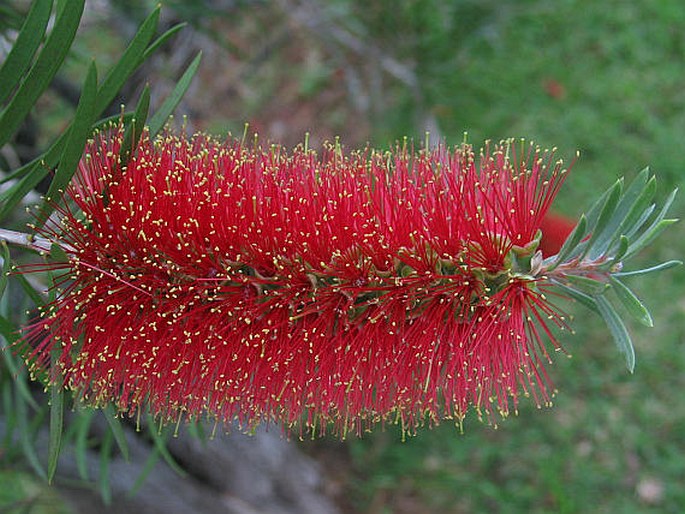Syn.: Metrosideros rigida Dum. Cours., Metrosideros rigidifolia Hoffmanns.
Family: Myrtaceae Juss.

Distribution: Most species of the genus Callistemon come from Australia, some from New Caledonia. This species is native to the coastal areas of New South Wales. It was introduced to Europe in 18th century. Today it grows in gardens and greenhouses in subtropics and temperate zones around the world.
Ecology: In its native areas Callistemon grows in damp places but also it is drought-resistant. It favors sunny places and acid to neutral soil. Flowers (in the northern hemisphere) from April to June; occasionally blooming again in autumn.
Description: A perennial, 1–4 m tall, evergreen shrub with stiff arc-shaped branches. The leaves are alternate, linear to oblanceolate with entire margins, leather-like, 5–7 cm long, 3–4 mm wide. The inflorescence is 4–6 cm wide, 7–15 cm long spike, similar to a brush for cleaning bottles. The flowers are red to purple with tiny petals; stamens are 2–2,5 cm long, red with yellow tip colored by pollen. The flowers are not terminal and grow around the stem. The fruit is a capsule, which remains on the plant and opens after the death of the plant or fire.
Note: The name is derived from Greek words „kallos“ which means beauty and „stemon“ which means stamen.



These images were taken in Madeira, Funchal (May 18, 2006)


